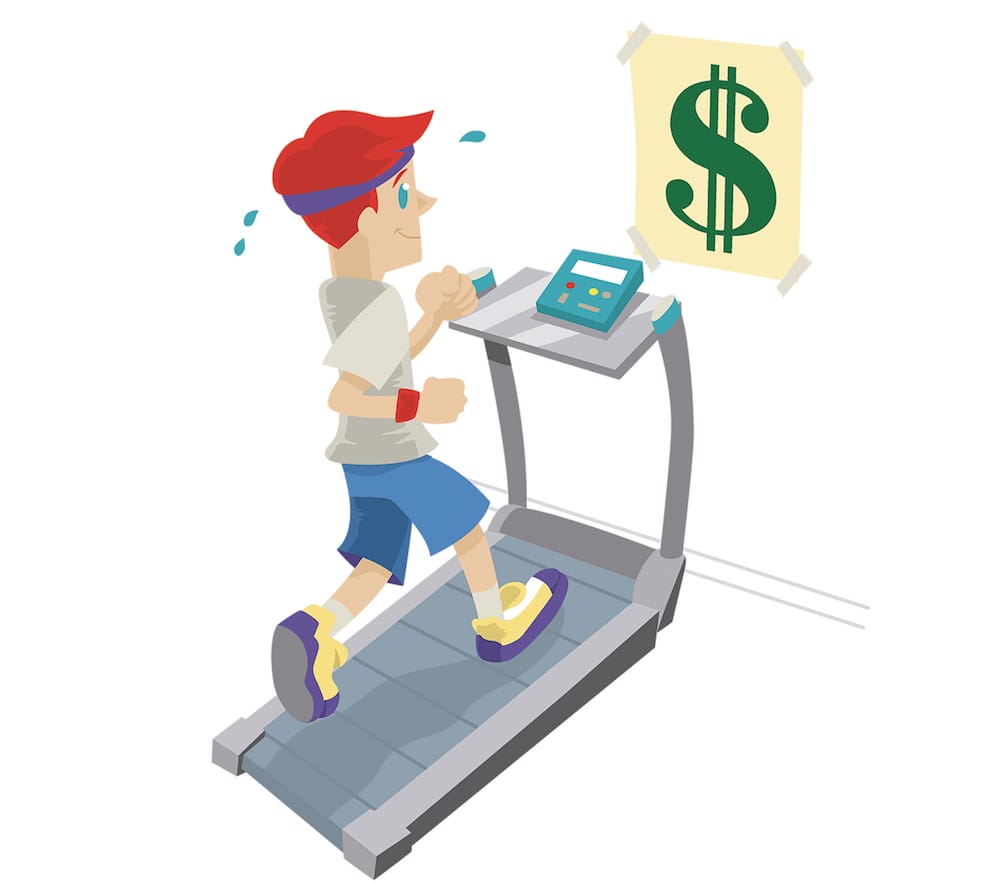Photos special to Fargo INC! staff
After more than a decade working in design and software and founding multiple businesses and products, Codelation Founder Josh Christy understands one thing above all else: The world of entrepreneurship is lonely, but it doesn’t have to be.
That’s why he started a blog, to not only help fellow CEOs and owners step around some of the holes he’s fallen into but, perhaps more importantly, to help them discover (or rediscover) their “why.”
The “why,” he believes, is what will keep you grounded during those highest highs and what will pull you out of those lowest lows.

Anyone who’s had a service-based consultancy for long enough has chased the idea of passive revenue.
Not having to financially start from zero every month is an amazing feeling that allows you to sleep better at night.
As a consultancy, our business relies on us hitting a certain number of hours billed each day, week and month.
If we estimate a project wrong, we either have to eat the cost of it or have that dreaded conversation with the client about how we calculated wrong and now their budget is in jeopardy.
After getting burned on a few—or a lot—of over-budget projects, we naturally begin to look over the fence and see that the grass appears to be greener. We start to chase the idea of a product or educational course—sometimes with blind ambition.
When most people talk about passive revenue within a consulting practice, especially within the software space, we usually think about up-charging for hosting, re-marketing a related service or creating a product to sell into a different market.
While creating hosting revenue and other added-value services seems to make sense, I still recommend against it as now you have the support headaches. Why not just hand off the hosting to a company that specializes in it and offers 24/7 support? Is the extra $50 per customer per month worth the potential hassle?
Selling into a new market is something I’ve done more than once, and I’ve paid the price for it. What we don’t realize is how important a captive audience is. If you have an engaged group of people who is listening and willing to purchase from you, it’s way more valuable than a product.
Once you have an audience, you can launch anything you want. So why are we trying to build a new audience around a new product that doesn’t exist yet?
Most of the time, a successful product isn’t about the product but more about the marketing and sales.
For example, we created a staff-scheduling solution for the restaurant industry about three years ago. It was a better version of what existed in the market at the time, but we underestimated how difficult the sales cycle would be. We were trying to sell to someone who was extremely busy and didn’t see the value in switching from what they currently were doing.
What we also didn’t realize is that creating something people will rely upon really isn’t a passive revenue stream. You can’t sell it, and that’s the end of the transaction. They require ongoing support, the addition of features, chasing expired credit cards … the list goes on and on.
Most of the time, a successful product isn’t about the product but more about the marketing and sales. So why not leverage the audience you already have into buying more from you?
So where does that leave us? Is it a good idea or no?
I think it all goes back to the notion of the get-rich-quick infomercials we’ve always seen on late-night TV. We want that magic bullet to solve our cash-flow issues and want to set it and forget it. So instead of chasing that elusive idea of passive revenue, why not focus on value-added services and partnerships?
Here are five things we are currently working on in our business to help grow our team and bottom line:
1. Focus on creating value over passive income.
If you start with a real problem versus starting with a goal of revenue, you might just make something of value. Plus, it’s less likely to be abandoned later when things are tough if you are just in it for the money.

2. Find partnerships with businesses that have similar clients.
As an example, if you run a carpet-cleaning business, could you partner up with companies that paint and combine sales efforts to apartment-complex owners? It might be more attractive for them to call one person and get everything done at once versus coordinating multiple vendors.
3. Client Retainers
One of the reasons most of us in the consulting space go after a product or passive revenue stream is to smooth out the peaks and valleys of our cash flow. Another way to do this is to find a way to offer a retainer to your clients so that you have more predictable revenue coming each month.
Take a look at your customer list and find those that who done recurring work with you over the last six months. See if you could offer them a guaranteed spot on the calendar each week or month at a slightly reduced rate.
4. Productize your services
Productizing your services works well if it’s tough to differentiate your business from the competitors. It may be as simple as changing how you engage with your leads. If your competitors force them to contact you first to start the conversation, could you put your pricing and strategy out on your website for more of a self-service option? You will probably get fewer leads coming in, but they are far more likely to engage as they have seen the process and the pricing.
“If you start with a real problem versus starting with a goal of revenue, you might just make something of value.”
5. Get a foot in the door
We’ve discovered that there are a limited number of people who 1) have $40,000 to put toward a software idea and 2) are willing to spend that much money on something.
What we have found success in is helping them to create the strategy for their project at a very low price point. Working closely on the business roadmap with our customer helps demonstrate our knowledge and build trust before committing to the overall project.
At the end of the day, there are many ways to grow your business, and a passive revenue stream might fit well. Don’t forget to validate the idea before spending resources on it, though. Hopefully you give one of the ideas above a try. I’d love to hear what has worked well for you!








